1. what is real and what is not (trick the brain)
1.1. space that does not exist
2. related to telepresence such as social identities
3. long to escape the boundaries of real world
4. virtual reality 1991
4.1. Virtual Reality
4.1.1. field of study
4.1.1.1. Bjork in 360 virtual reality
4.1.1.2. art
4.1.1.3. telepresence
4.1.1.3.1. skype
4.1.1.3.2. facetime
4.1.1.4. telexistence
4.1.1.4.1. interact with environment
4.1.1.5. training
4.1.1.5.1. workbenches
4.1.1.6. Science
4.1.1.6.1. surgical simulation
4.1.1.7. education
4.1.1.8. SCI-FI
4.1.1.8.1. Movie/3d imax
4.1.1.9. Video Game
4.1.1.9.1. the void
4.1.1.10. ARCHITECTURE
4.1.1.10.1. architecture
4.1.2. Virtual Device
4.1.2.1. Clothing
4.1.2.1.1. HIM (human machine interfaces)
4.1.2.1.2. keyboard /mouse
4.1.2.1.3. joysticks
4.1.2.2. input device
4.1.2.2.1. treadmill
4.1.2.2.2. pressure mat
4.1.2.2.3. VituSphere
4.1.2.3. glass or google
4.1.2.3.1. for PC
4.1.2.3.2. for mac
4.1.2.3.3. for PS3
4.1.2.4. HEADSET
4.1.2.4.1. head-mounted Display (HMD)
4.1.2.4.2. CAVE Automatic systems
4.1.2.4.3. CYBERsickness
4.1.3. Virtual Reality Immersion
4.1.3.1. Breadth of Information
4.1.3.1.1. SECOND LIFE
4.1.3.2. Depth of Information
4.1.3.2.1. Ambience and Atmosphere
4.1.3.3. TYPE OF IMMERSION
4.1.3.3.1. tactical immersion
4.1.3.3.2. strategic immersion
4.1.3.3.3. narrative immersion
4.1.3.4. Consensus reality
4.1.3.4.1. CONSENSUS REALITY through nervous system
4.1.3.5. Philosophy
4.1.3.5.1. Objectivists
4.1.3.5.2. Idealists
4.1.3.5.3. Materialists
4.1.4. Interactivity Element
4.1.4.1. Speed
4.1.4.2. mapping
4.1.4.3. Range
4.1.5. Virtual appllication
4.1.5.1. Kinect/Wii
4.1.5.2. Augmented Reality
4.1.5.3. Virtual Worlds
5. Cognitive neuroscience
5.1. neural substrate
5.2. Nervous system
5.2.1. CNS = brain and spinal cord
5.2.2. PNS = nerves (connect CNS to every part of the body)
5.3. Brain Mapping
5.3.1. Neuroimaging
5.3.1.1. functional imaging
5.3.1.1.1. PET
5.3.1.1.2. MEG
5.3.1.1.3. SPECT
5.3.1.1.4. NIRSI
5.3.1.1.5. EEG
5.3.1.1.6. fMRI
5.3.1.2. structural imaging
5.3.1.2.1. CT
5.3.1.2.2. MRI
5.4. Neuroimaging
5.4.1. neuroimaging
5.4.1.1. neuroimaging
5.4.1.1.1. neuroimaging
6. Depth perception
6.1. monocular cues
6.1.1. motion parallax
6.1.2. Depth from motion
6.1.3. Kinetic Depth effect
6.1.4. Perspective
6.1.5. Relative size
6.1.6. Familliar size
6.1.7. Absolute size
6.1.8. Aerial Perspective
6.1.9. Accommodation
6.1.10. Occlusion
6.1.11. Curvilinear perspective
6.1.12. Texture gradient
6.1.13. Lighting Shading
6.1.14. Defocus blur
6.1.15. Elevation
6.2. Binocular cues
6.2.1. Stereopsis
6.2.2. Convergence
6.2.3. Shadow Stereopsis
